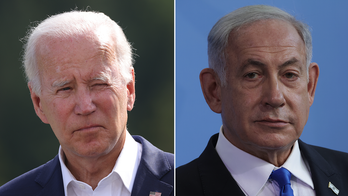Gov. Gretchen Whitmer on coronavirus pandemic's impact on Michigan
Michigan Gov. Gretchen Whitmer joins John Roberts on 'Fox News Sunday.'
Get all the latest news on coronavirus and more delivered daily to your inbox. Sign up here.
Michigan on Monday became the latest state to issue a stay-at-home order to its residents, joining a growing list of places on lockdown across the country as lawmakers try to thwart the spread of the coronavirus.
Michigan Gov. Gretchen Whitmer announced the "Stay Home, Stay Safe" executive order, which goes into effect on Tuesday and will be in place until at least April 13. The order requires all Michigan businesses to suspend in-person operations unless they are part of the "critical infrastructure workforce" or those needed for "minimal basic operations."
Schools will also remain closed until April 13.
Residents of the state are also being asked to stay at home, but people can go outside to care for family members, perform necessary government activities, obtain necessary supplies like groceries or medications, and to exercise.
"When we look back at this, we’ve got to be able to say we did everything we could," Whitmer said during a press conference.
She added: "Don’t play fast and loose with what is essential and what is not…Don’t try to skirt the rules."
Michigan joins a growing list of states that have issued orders restricting movement of residents in an effort to slow the spread of the contagion. Current restrictions are in place in the country’s three largest cities – New York, Los Angeles and Chicago – and affect more than 70 million people across the country.
Whitmer decided to issue the executive order after the state saw a drastic rise in COVID-19 infections over the last 13 days. The state went from zero cases to 1232 confirmed cases in that time period, with the number of those infected doubling over the weekend.
Whitmer added that Michigan needs help from the federal government to keep health care workers protected as they battle the outbreak, saying that the allotment of personal protective equipment they’ve received “was barely enough to cover 1 shift at 1 hospital.”
“Our ability to safely lift this order will depend on factors like data on COVID-19 infections and the disease's rate of spread, depend on whether sufficient medical personnel, hospital beds and equipment exists to meet anticipated medical needs and the state's capacity to test for COVID-19 cases and isolate infected people,” Whitmer said.
The risk to doctors, nurses and others on the front lines has become plain: Italy – which has been the hardest hit European country -- has seen at least 18 doctors with coronavirus die. Spain reported that more than 3,900 health care workers have become infected, accounting for roughly 12 percent of the country's total cases.
CLICK HERE FOR COMPLETE CORONAVIRUS COVERAGE
Health care workers say they are being asked to reuse and ration disposable masks and gloves. A shortage of ventilators, crucial for treating serious COVID-19 cases, has also become critical, as has a lack of test kits to comply with the World Health Organization's exhortations to test as many people as possible.
Both President Trump and Dr. Anthony Fauci, the U.S. government's top infectious-disease expert, have promised that medical supplies are about to start pouring in and will be “clearly directed to those hot spots that need it most.” New York, California and Washington are the states the federal government have identified as hot spots of the outbreak.
For most people, the new coronavirus causes only mild or moderate symptoms, such as fever or coughing. But for some older adults and people with existing health problems, it can cause more severe illness, including pneumonia. Over 100,000 people have recovered, mostly in China.
The Associated Press contributed to this report.







